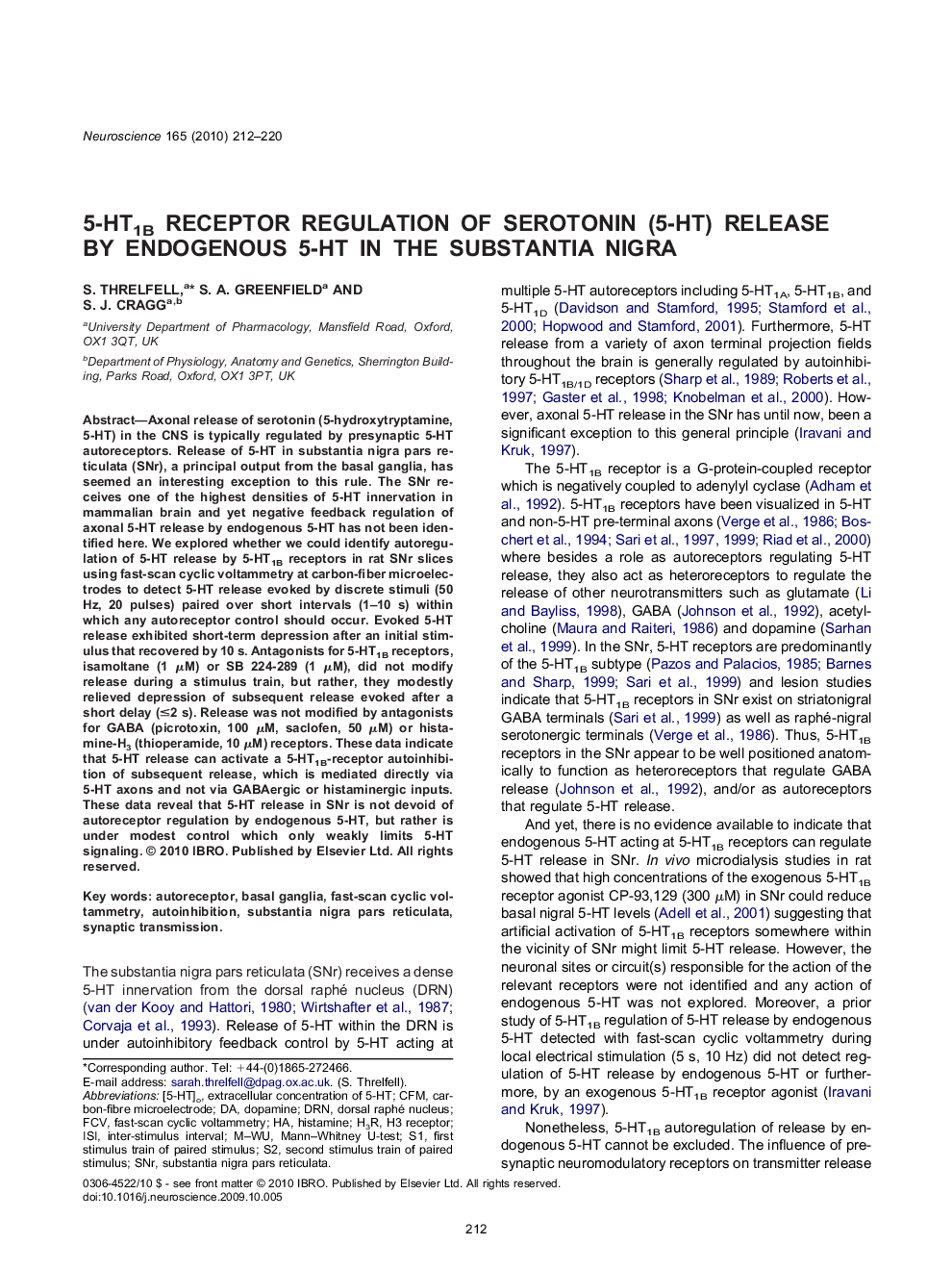| Article ID | Journal | Published Year | Pages | File Type |
|---|---|---|---|---|
| 4339856 | Neuroscience | 2010 | 9 Pages |
Axonal release of serotonin (5-hydroxytryptamine, 5-HT) in the CNS is typically regulated by presynaptic 5-HT autoreceptors. Release of 5-HT in substantia nigra pars reticulata (SNr), a principal output from the basal ganglia, has seemed an interesting exception to this rule. The SNr receives one of the highest densities of 5-HT innervation in mammalian brain and yet negative feedback regulation of axonal 5-HT release by endogenous 5-HT has not been identified here. We explored whether we could identify autoregulation of 5-HT release by 5-HT1B receptors in rat SNr slices using fast-scan cyclic voltammetry at carbon-fiber microelectrodes to detect 5-HT release evoked by discrete stimuli (50 Hz, 20 pulses) paired over short intervals (1–10 s) within which any autoreceptor control should occur. Evoked 5-HT release exhibited short-term depression after an initial stimulus that recovered by 10 s. Antagonists for 5-HT1B receptors, isamoltane (1 μM) or SB 224-289 (1 μM), did not modify release during a stimulus train, but rather, they modestly relieved depression of subsequent release evoked after a short delay (≤2 s). Release was not modified by antagonists for GABA (picrotoxin, 100 μM, saclofen, 50 μM) or histamine-H3 (thioperamide, 10 μM) receptors. These data indicate that 5-HT release can activate a 5-HT1B-receptor autoinhibition of subsequent release, which is mediated directly via 5-HT axons and not via GABAergic or histaminergic inputs. These data reveal that 5-HT release in SNr is not devoid of autoreceptor regulation by endogenous 5-HT, but rather is under modest control which only weakly limits 5-HT signaling.
